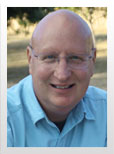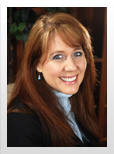|
To receive daily emails from Breaking Christian News to your inbox CLICK HERE
Scientists Halt Light for One MinuteSay what? Such command of light, they say, could lead to "mind-boggling new technologies." REPORTER'S NOTE: Surely, God must be amused. -Teresa Neumann, BCN.
Light can be hard to handle, yet humans have nearly mastered it: We can create light (turn on a flashlight) and destroy it (shine it on black asphalt). We can measure it, bend it, and slow it down. We can use it to propel spacecraft, to transmit telephone conversations, to perform surgery. There seems to be no end to what light can do.... Yet until recently there was one thing we couldn't do with light: pause it. Stopping light in its tracks and releasing it again unchanged was beyond human ken. But now scientists have figured out how to do even that.
The laser pulse was kilometers-long before it entered the cell, yet the pulse fit intact within the centimeters-wide chamber. Sound like magic? Perhaps, but it was only quantum mechanics. Quantum mechanics describes the bizarre rules of light and matter on atomic scales. In that realm, matter can be in two places at once. Objects can be particles and waves at the same time. And nothing is certain—only probable or improbable. This improbable feat—stopping light—was accomplished by two teams. One was led by Ron Walsworth, a physicist at the Harvard-Smithsonian Center for Astrophysics, and the other by Lene Hau of Harvard University's Department of Physics. Walsworth's group used warm rubidium vapors to pause their laser beam; Hau's group used a super-cold sodium gas to do the same thing.
Photons—that is, particles of light—are massless, and that's why they can travel so fast. The Harvard researchers stopped their laser beams by "weighing the photons down." The technique requires two lasers: a "control laser" and a "signal laser." The signal laser is the one to be stopped. Using the control laser, Walsworth's team caused rubidium gas in the glass cell to become "dispersive"—in other words, the velocity of light passing through the gas depended sensitively on the color of the light. (Prisms work much the same way, although the analogy is not exact.) In such a dispersive gas, atoms and photons interact strongly, says Walsworth. "Effectively dragged down by strong interactions with atoms, the photons slowed to a crawl." Physicists call such an atom-photon system a "polariton." Next they reduced the intensity of the signal laser until the polariton was 100% atomic. There were no photons left inside the chamber. Yet the imprint of the photons remained—on the atoms themselves. Like a child's top, atoms spin. (Physicists say they "carry angular momentum.") Information describing the fading laser pulse was stored, like a code, in the up-and-down patterns of the atoms' spin axes.
Freeing such a stored pulse is easy: another laser beam directed through the chamber can release it. "In the near future, this technique may enable efficient, reversible mapping of quantum information between light and atoms," says Walsworth. The possibilities are mind-boggling: "Suppose you have some information encoded in atoms," says Walsworth. "You could map that information onto light, send it over to some other group of atoms, and imprint the information there." Walsworth calls this "quantum communication." Quantum communication might someday be used for sending ultra-secure messages. One of the quintessential traits of the quantum world is that observing a system actually alters that system's properties. In other words, it would be impossible to "touch" a quantum message without leaving "fingerprints." "So there's no way to intercept messages, break the code, send them on, and have the receiver not know about it," Walsworth says. Does this seem familiar? It might to fans of Star Trek. Every time Capt. Kirk uses his transporter to visit an alien planet, distant atoms are re-arranged by a beam of something like light to match his body's molecular pattern back on board the Enterprise—a far-out example of "quantum communication." Star Trek transporters will remain fiction for a long time to come, say researchers. Even so, stopping light might be a tiny first step toward them. In the nearer future these techniques might advance a wild new form of computing called "quantum computing." Futuristic quantum computers would store data and crunch numbers by manipulating the quantum states (like spin) of individual atoms. Because of the vast numbers of atoms in even a thimble-full of matter, quantum computers could have almost unimaginable power. Computers do their work using binary numbers—that is, ones and zeros. Such "bits" are in constant motion inside your desktop PC. In a quantum computer the bits—called qubits—could be carried from place to place by photons. Horizontal polarization, for instance, might represent "0" and vertical polarization "1". (It doesn't end there: Qubits can be 0, 1, or a superposition of the two—it's allowed by quantum physics! Qubits are natural tools for "fuzzy logic." Such a computer would work only if there were some way to stop light, change its state, and send it on its way again. Walsworth's team has demonstrated just such a sequence: While a light pulse was imprinted on the rubidium atoms, they made a simple change to the atoms' quantum states. Much to the researchers' delight, those changes were present in the regenerated light pulse. Walsworth and Hau used vapors (rubidium and sodium) to pause light. Will the insides of quantum computers be vaporous as well? Maybe not: A group led by Phillip Hemmer of Hanscom Air Force Base (he is now at Texas A&M University) has shown that light can be stopped as well by solids. They used a rare-earth doped insulator—a type of material generally used for ultra-high density optical memories and processors. "It's very nice to think that it works in a solid state, which is moving more towards the electronics that we're familiar with," Walsworth says. In a strange new world where scientists can stop light, hold it, and release it at will—familiar is good.
To receive daily emails from Breaking Christian News to your inbox CLICK HERE
Other Recent Articles from Breaking Christian News Hamas Opens Fire on Israeli Troops, Intelligence Bombshell Reveals Threats to European Jews DOJ Charges Democrat Florida Congresswoman With Stealing $5 million in FEMA Funds George Soros Confirmed as CCDH Funder; And 20+ Dark Money Backers Now Exposed Homan: ICE Has Found 30,000 of the 300,000 Migrant Children Trafficked Under Biden Alveda King: When Words Become Weapons; America's Dangerous Double Standard on Political Violence Federal Court Delivers a Big Blow to GOP Prospects for Holding the House Hakeem Jeffries' Team Sought Donations from Epstein, Newly Released Email Shows [WATCH] US Senate Passes Bill to Release Epstein Files, Heads to Trump's Desk Judge Orders Maine Mom Not to Take Her Daughter to Church or Read Her the Bible SC Man No Longer Barred from Sharing His Faith, Can Hold Sign that Says 'Trust Christ' Terrorists Transformed into Evangelists: YWAM Reports Powerful Stories of Redemption in Nigeria Military Recruitment Is Surging: A Multifaceted Turnaround Americans to Receive Tariff Dividends as Soon as 2026 |
All articles on this site and emails from BCN are copyrighted property of Breaking Christian News. Permission is given to link to, or share a BCN story if proper attribution is given to both the original writer and summarizer of the story. Breaking Christian News 2005-2019. All Rights Reserved.
Breaking Christian News is a division of Elijah List Publications, Inc. All Rights Reserved
Disclaimer: Articles and links, as well as the source articles linked to; do not necessarily reflect the opinion of Breaking Christian News.
| Home | Store | Subscribe | Facebook | Article Archive |



 From NASA comes a news release that begins by referring to a statement made in 2002:
From NASA comes a news release that begins by referring to a statement made in 2002:  Last year, physicists at Harvard University shined a laser beam into a glass cell filled with atomic vapors. The light went in, but it didn't come out again. It was not destroyed or absorbed, but rather stored—ready to emerge intact at the scientists' bidding. (Photo: Ron Walsworth)
Last year, physicists at Harvard University shined a laser beam into a glass cell filled with atomic vapors. The light went in, but it didn't come out again. It was not destroyed or absorbed, but rather stored—ready to emerge intact at the scientists' bidding. (Photo: Ron Walsworth)  Before she managed to stop light altogether, Lene Hau and colleagues first slowed it to bicycle speeds in 1999. (Photo: Lene Hau)
Before she managed to stop light altogether, Lene Hau and colleagues first slowed it to bicycle speeds in 1999. (Photo: Lene Hau)  As the laser pulse enters the chamber containing the rubidium vapor, the information that defines the light becomes imprinted on the atoms' spin states (indicated by the small arrows). In the moment that the light is "stopped," only the spin states exist. This image by Tony Phillips is based on another from the American Institute of Physics.
As the laser pulse enters the chamber containing the rubidium vapor, the information that defines the light becomes imprinted on the atoms' spin states (indicated by the small arrows). In the moment that the light is "stopped," only the spin states exist. This image by Tony Phillips is based on another from the American Institute of Physics.








